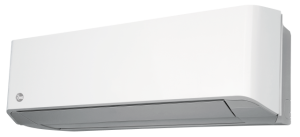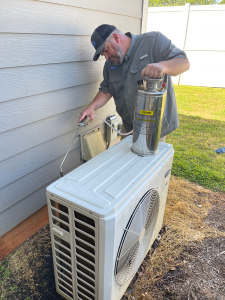 Mini Splits Installation Vs. Traditional HVAC: Key Differences
Mini Splits Installation Vs. Traditional HVAC: Key Differences
Walk into almost any newly renovated home or small commercial space, and chances are you’ll spot a compact, wall-mounted device gently humming away high on the wall. These aren’t just stylish additions; they’re mini splits—sometimes called ductless heat pumps or ductless mini splits—and their popularity is skyrocketing. Traditional HVAC systems, built around a network of air ducts, have long been the default option for heating and cooling American homes. Yet, for property owners seeking flexibility, energy savings, or solutions for challenging spaces, the mini split stands as an intriguing alternative.
But how do these systems really stack up against the tried-and-true forced air systems? There’s more to the comparison than meets the eye.
How Mini Splits and Traditional HVAC Systems Work
Understanding the fundamental differences begins with their basic operation. Traditional HVAC systems push conditioned air throughout a building using extensive ductwork. Central units (furnace, air handler, or heat pump) sit out of sight, heating or cooling air and sending it through vents in each room.
Mini splits, on the other hand, divide the system into two main components: outdoor condenser and indoor air handlers. These are linked by thin refrigerant lines instead of bulky metal ducts. Each indoor unit serves a specific room or zone, providing tailored comfort exactly where it’s needed.
Installation: Simplicity vs. Infrastructure
Traditional HVAC: Built-In Complexity
Installing a central HVAC system is a major project. It requires plenty of space for ductwork, return air chases, a mechanical closet or attic, and sometimes soffits to hide unsightly pipes and vents. Labor is extensive, often invasive, and costly for existing homes. Many older houses simply weren’t designed with ductwork in mind, leading to difficult retrofits that can disrupt walls, ceilings, or even architectural details.
Mini Splits: Flexible by Design
Mini splits sidestep the duct dilemma entirely. Their indoor units mount directly on walls, ceilings, or, in low-profile cases, onto the floor. Installation usually involves creating a small hole for refrigerant lines and electrical connections. There’s no need to reroute rooms or sacrifice moldings.
For historic houses, compact apartments, or new additions, this simplicity is hard to ignore. Owners quickly notice decreased labor time, reduced mess, and fewer surprises once work begins. Here’s a quick look at the comparative installation components:
| Aspect | Traditional HVAC | Mini Split |
|---|---|---|
| Ductwork Needed | Yes | No |
| Major Structural Work | Often (especially in retrofits) | Minimal |
| Installation Timeline | Days to weeks | Hours to a few days |
| Flexibility | Fixed by duct layout | Individual room placement |
| Ideal for Additions | Not easily | Perfect fit |
Energy Efficiency: Ducts Tell the Tale
One of the biggest arguments for mini splits is efficiency. Up to 30% of a home’s heating and cooling energy can be lost through ductwork—especially when ducts run through unconditioned spaces, like attics or crawlspaces. Leaks, gaps, or poorly insulated ducts only make matters worse.
Mini splits eliminate this source of waste. Air is delivered straight into each room, so energy isn’t lost along the way. Many mini splits also use inverter-driven compressors, modulating power with greater precision and adapting output to real-time conditions. This results in less energy cycling on and off and smoother, quieter operation.
Central HVAC: The Cost of Comfort
Traditional systems struggle to match this targeted efficiency, particularly when a single thermostat has to cater to every room. Unused or rarely occupied rooms are still conditioned, modeling “one-size-fits-all” comfort rather than precision.
Mini Splits: Zoning Mastery
Mini splits let occupants set temperatures for each unit independently. Working from home and want your office cooler than the living room? It’s as easy as adjusting the remote. This level of zoning can have a marked effect on monthly utility bills, especially in homes where several rooms see little use during daytime hours.
Aesthetic and Acoustic Considerations
Not every homeowner wants to see an appliance on their wall, even if it’s sleek and modern. Mini splits are visible, unlike the hidden grilles and registers of traditional HVAC. Some design-conscious users see this as a downside. Though options are expanding, there’s no getting around a mini split’s visual presence in every room it serves.
Acoustically, mini splits maintain a reputation for quiet operation, with most units rated softer than typical conversation. Central systems can be noisy, particularly in homes with old or poorly insulated ductwork, but usually keep most mechanical noise out of living spaces due to the remote location of the air handler.
Maintenance Demands: Simpler Doesn’t Mean Carefree
Every HVAC system requires regular attention, but the nature of that maintenance differs.
Traditional units need professionally cleaned ductwork every few years to prevent dust, mold, and allergen buildup. Filters require regular replacement, and mechanical components—like blowers and compressors—need inspection.
Mini splits ask less when it comes to hidden infrastructure. There are no ducts to collect dust, but the filters in each indoor unit should still be cleaned or replaced regularly. Outdoor coils and condensate drains benefit from routine checks. If a home has several indoor units, maintaining all the filters might be more labor intensive than simply addressing a single central return. Many owners find the tradeoff worthwhile, mainly because cleaning a filter is easier than scheduling and paying for duct cleaning.
Cost Comparison: Upfront and Over Time
Budget often makes or breaks decisions. Central HVAC systems usually involve higher upfront costs due to the complexity of installation and duct requirements, particularly in homes where ductwork needs to be added or replaced.
Mini splits tend to offer lower installation costs for single-room or supplemental systems, like finished basements, sunrooms, or garage conversions. For whole-home solutions, especially in larger properties where multiple indoor units are needed, the upfront cost of mini splits can actually surpass that of traditional systems.
Yet, energy savings over time can make mini splits more economical in the long run, mainly if they’re used to zone condition spaces and operate at partial loads for much of the year. Here’s a general breakdown:
| Aspect | Traditional HVAC | Mini Split |
|---|---|---|
| Initial System Cost | Medium to High | Low to High (depends on #) |
| Installation Labor | High | Low to Moderate |
| Ductwork Cost | High (if new ducts) | None |
| Operating Cost | Moderate to High | Low |
| Typical Repair Cost | Moderate | Low to Moderate |
Adaptability, Longevity, and Reliability
Mini splits shine in non-traditional spaces where ducts are impractical. Offices, historic buildings, ADUs (accessory dwelling units), or rooms with vaulted ceilings all benefit from the “no ducts required” mantra. They’re ideal for mixed-use buildings or situations where building codes limit invasive construction.
Life expectancy is similar; both systems usually last 12-20 years with proper maintenance. Repairs for mini splits are often simpler, but since these units are relatively new to the U.S. market, some service technicians may face a learning curve.
Comfort, Control, and Indoor Air Quality
Temperature swings and “hot” or “cold” rooms can be a symptom of poorly designed ductwork or single-zone thermostats. Mini splits, with their independent zones, allow for much more accurate comfort matching.
Air quality also benefits. Since mini splits skip the ducts, there’s no opportunity for mold, allergens, or dust to build up and recirculate. Their filtration, though localized, is generally more effective than what’s found in many forced-air systems. For allergy sufferers, this can be a major selling point.
Home Value and Resale Impact
When it comes to resale, buyers can be unfamiliar or even wary of mini splits, especially if they’ve never experienced them. Central air still ranks high on most wish lists, but perceptions are changing as mini splits gain market share. In certain regions—or where energy codes encourage ductless technology—mini splits actually signal premium efficiency and forward-thinking design.
Factors to Weigh Before Choosing
Deciding between these systems isn’t just about technology; it’s a lifestyle call based on your home’s layout, your climate, your aesthetic preferences, and how you occupy your space. Here’s what to ponder:
- Size and layout of your home
- Local climate and average seasonal temps
- Frequency of use in each room or zone
- Willingness to see visible air handlers
- Long-term utility savings vs upfront installation costs
- Local contractor experience and available service support
Every home brings its own unique challenges and opportunities. Whether it’s the flexibility and efficiency mini splits promise or the familiar comfort of traditional central air, understanding the fundamental differences puts you in a stronger position to select the right fit.
Equipped with the right information, today’s property owner has more—and better—choices than ever before.
